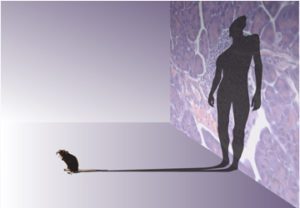

When small pieces of human lung tissue were surgically implanted into the back of immunodeficient mice, the tissue expanded, became filled with blood vessels, and developed cells and structures characteristic of the human lung. Cells within these implants could be infected with MERS-coronavirus, Zika virus, respiratory syncytial virus, human cytomegalovirus (HCMV), and the tuberculosis bacillus. Replication of HCMV could be impaired by treatment with an antiviral compound.
After the human lung was implanted into BLT mice, the tissue became populated with human innate and adaptive immune cells which produced human cytokines. When inoculated with HCMV, immune responses developed that controlled the viral infection. By contrast, in mice with only human lung implants HCMV infection was maintained for long periods of time. Immune control of HCMV infection was associated with the production of antibody, T cells, and cytokines.
These observations establish a model for studying the pathogenesis and immune response to human respiratory pathogens, and for testing vaccines and antiviral drugs. Perhaps even more exciting is the possibility of creating mice with implants of other human tissues for studying not only other viral infections but a variety of human diseases.

It seems rather similar to the way we can plug different appliances into the home electricity (and water) supply to carry out different or extra functions than originally built in–so long as we have the right type of connector and power supply.
Interesting that initial development assigns fixed spatial positions for each organ, but, once they’ve grown, it doesn’t mind where you put them. Homeobox only works in one direction?